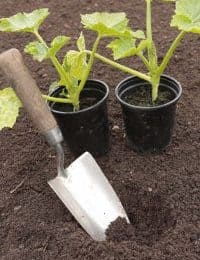RHS Level 2 Principles of Horticulture Exam Question
R2104 February 2011: Plant Propagation
Q.3. a. Define the term ‘seed dormancy’.
b. Name and describe TWO methods of overcoming seed dormancy, giving a NAMED plant example for each.
Examiner’s Comments:
a. The examiners note that the best answers came from candidates who “gave an appropriate definition of dormancy, clearly understood the term and referred to the seed as being viable”. They also recognised the importance of mentioning that dormancy is a block to germination even if growing conditions are ideal.
b. Here the examiners were keen to see “suitable plant examples that related to the specific dormancy factors being described.” Suitable methods of overcoming hard seed coat dormancy included scarification, chipping (nicking), hot water treatment and acid digestion. The examiners also mention dormancy factors such as growth inhibiting chemicals in the seed coat and plant growth substances such as gibberellins which require stratification. They note that some candidates confused stratification and scarification.
Possible Answers:
a,. Seed dormancy refers to inbuilt mechanisms in the seed that control the time of germination, for instance, many seeds do not germinate in late autumn when conditions are unfavourable for seedling growth, but remain dormant until the temperature and other factors are more suitable. When seeds are dormant it means that even though they are viable and capable of growth they will not germinate, even if growing conditions are ideal.
b. Method 1. Scarification involves any process of breaking, scratching, or mechanically altering the seed coat to make it permeable to water and gases. It is often used to overcome dormancy created by a hard seed coat. One form of scarification is mechanical – seeds are filed with a metal file, rubbed with sandpaper, or cracked with a hammer to weaken the seed coat. An example of seeds that may be treated in this way include Lupinus nanus.
Stratification is a technique used to overcome endogenous dormancy. Seeds having this type of dormancy will not germinate until subjected to a particular duration of moist-prechilling and/or moist-warm periods. For example, seeds of some autumn-ripening trees will not germinate unless chilled underground as they overwinter. Cold stratification (moist-prechilling) replicates this process. It involves mixing seeds moist but not wet coir, composted bark, or a mix of equal parts of the above with coarse sand, perlite or vermiculite. The mixture is placed in a plastic bag and sealed, then chilled Chill seed in a refrigerator, kept below 5°C (40°F) for four to 20 weeks, depending on the species. Pyracantha atalantioides is a species that requires cold stratification to break dormancy, at least 12 weeks are required.
Background:
Viable seeds that fail to germinate when provided the specified germination conditions for the kind of seed in question are said to be dormant.
Categories of seed dormancy – exogenous:
Seed coat:
1. Hard seededness: Seed fail to imbibe water due to impermeable seed coat.
2. Mechanical resistance: Rigid seed coverings resist embryo expansion even though the tissues may successfully take up water.
3.Chemical inhibitors: Seed coverings contain chemicals which inhibit germination
Endogenous:
Morphologically undeveloped embryo (Rudimentary embryo):
Some species produce seeds with extremely small and underdeveloped embryos in seeds that are mature enough to detach from the plant. Such seeds simply need much more time for the embryo to grow and develop within the seed prior to germination.
Internal dormancy:
1.Physiologically shallow dormancy: Present in some freshly harvested seed. Disappears with dry storage over a period of days or months.
2.Light dormancy: Some species have exact requirements in terms of light quality, quantity, and duration to induce germination.
3.Temperature dormancy: Many seeds are specific in their temperature requirements. Some need alternating temperatures (day/night). Others germinate over a narrow range of temperatures and go dormant at temperatures above or below this range.
4.Physiologically deep dormancy: Seeds are unable to germinate until they undergo a cool-moist period over a few days or a few months.
Combined dormancy: More than one type of dormancy may occur within the same seed.
Induced or secondary dormancy: Viable, non-dormant seeds may become dormant when placed in environments which are unfavourable to germination.

